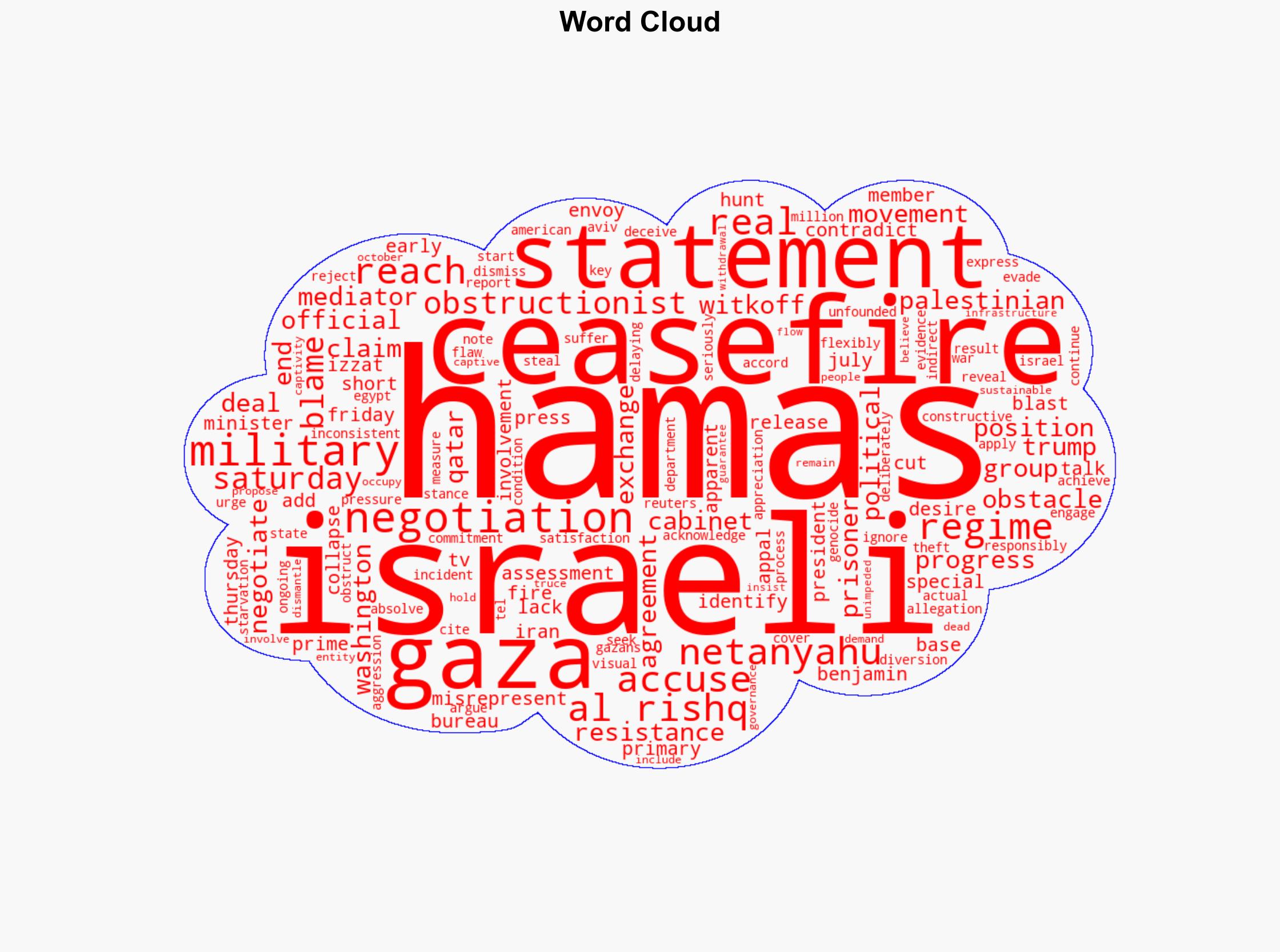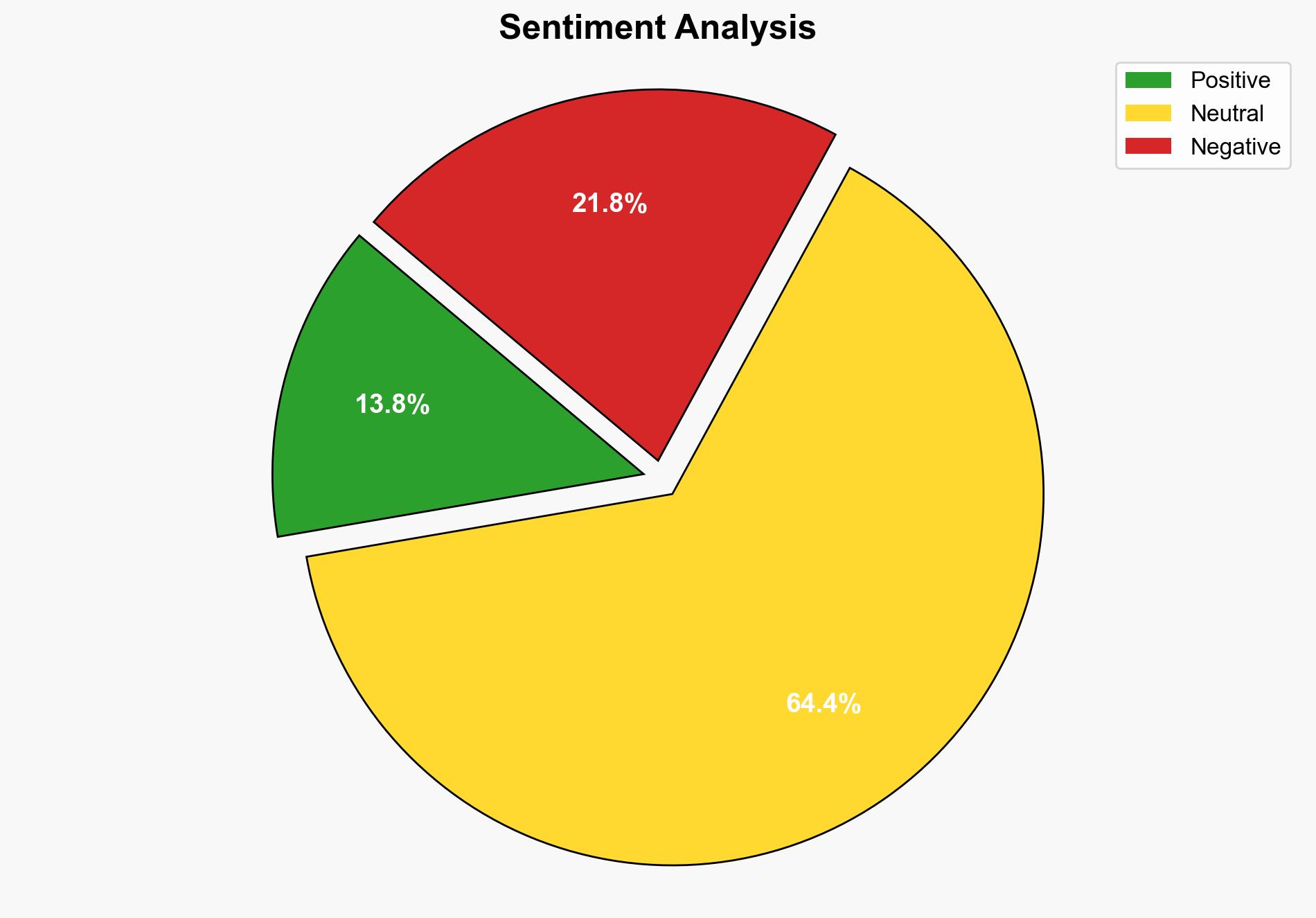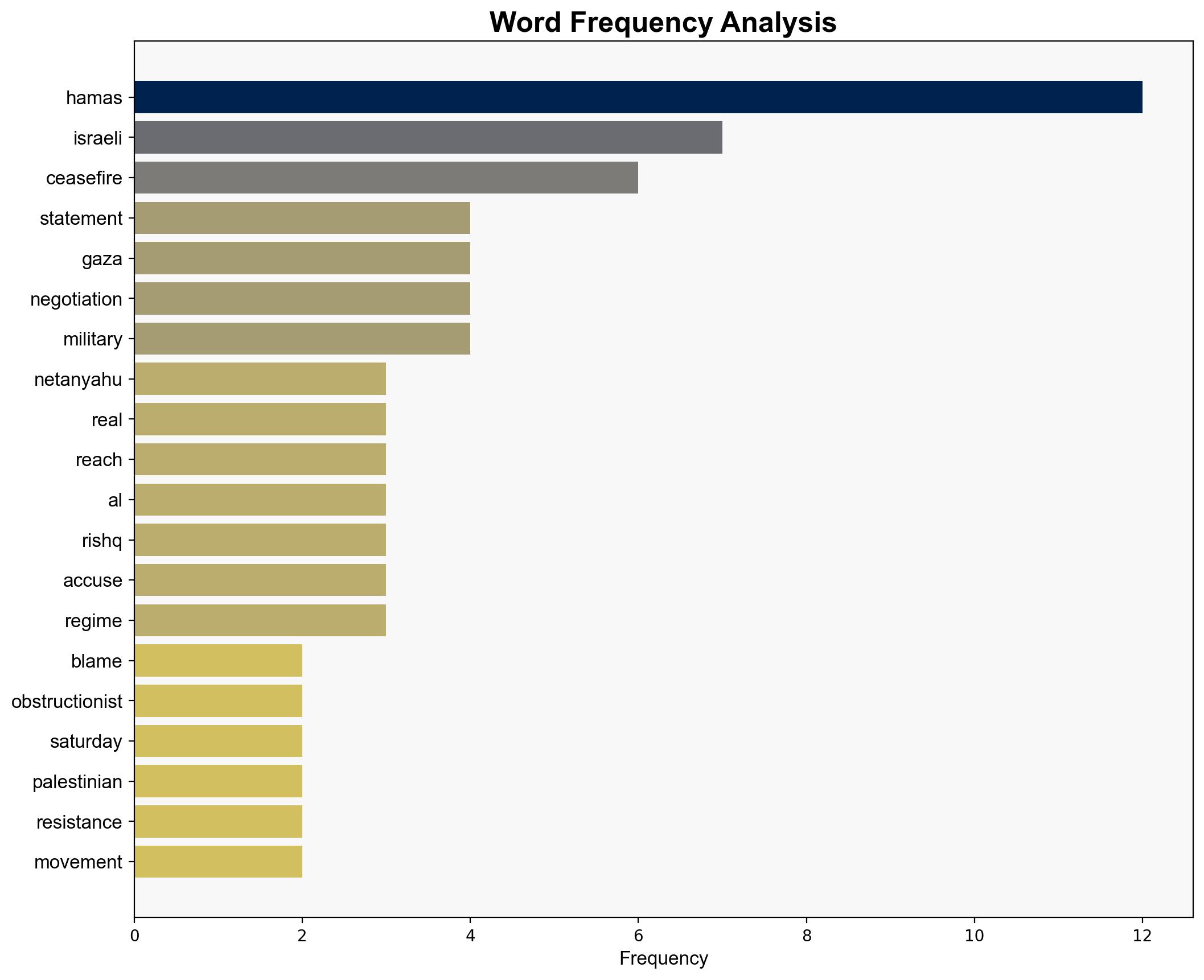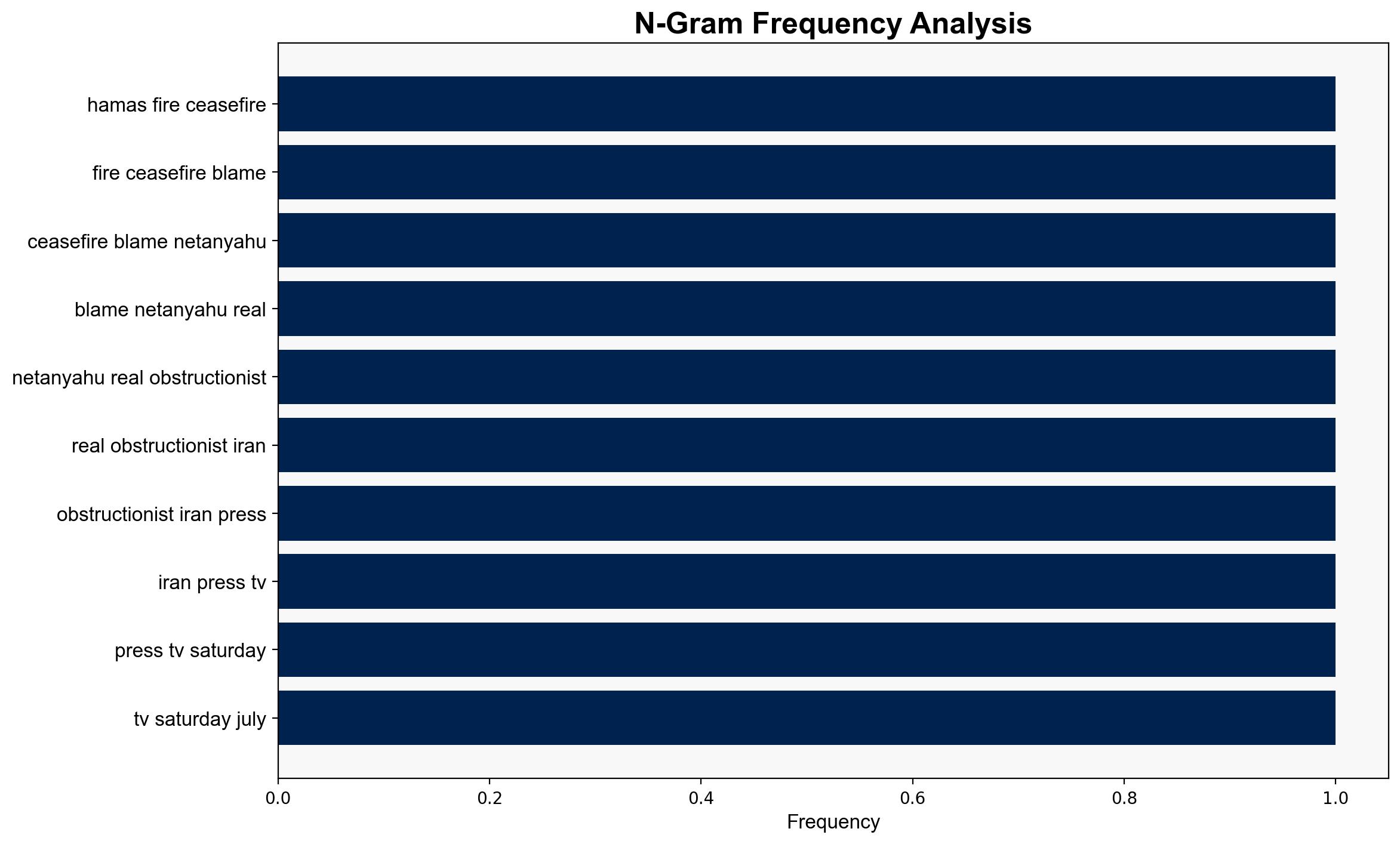Hamas fires back at US over ceasefire blame calls Netanyahu the real ‘obstructionist’ – Globalsecurity.org
Published on: 2025-07-27
Intelligence Report: Hamas fires back at US over ceasefire blame calls Netanyahu the real ‘obstructionist’ – Globalsecurity.org
1. BLUF (Bottom Line Up Front)
The most supported hypothesis is that Israel, under Netanyahu’s leadership, is the primary obstacle to a ceasefire agreement with Hamas. This conclusion is drawn from the structured analysis of statements and actions from multiple stakeholders, including mediators like Qatar and Egypt. Confidence in this assessment is moderate due to the complexity of the geopolitical environment and potential biases in the source material. It is recommended to increase diplomatic engagement with both Israel and Hamas, emphasizing third-party mediation to facilitate a sustainable ceasefire.
2. Competing Hypotheses
1. **Hypothesis A:** Israel, particularly Netanyahu’s cabinet, is the main impediment to achieving a ceasefire with Hamas. This is supported by statements from Hamas and mediators like Qatar and Egypt, who express satisfaction with Hamas’s negotiation stance.
2. **Hypothesis B:** Hamas is the primary obstructionist in the ceasefire negotiations, as suggested by U.S. statements and accusations of Hamas’s lack of commitment to the process.
Using ACH 2.0, Hypothesis A is better supported due to corroborative statements from multiple mediators and the consistent narrative from Hamas. Hypothesis B relies heavily on U.S. assertions, which may be influenced by political alignments.
3. Key Assumptions and Red Flags
– **Assumptions:** It is assumed that mediators like Qatar and Egypt are unbiased and accurately reporting negotiation progress. It is also assumed that U.S. statements are not influenced by external political pressures.
– **Red Flags:** Potential bias in U.S. statements and the lack of direct evidence supporting claims against Hamas. The complexity of the geopolitical landscape may obscure true intentions.
– **Blind Spots:** Limited insight into internal decision-making processes within both Israeli and Hamas leadership structures.
4. Implications and Strategic Risks
Failure to achieve a ceasefire could lead to prolonged conflict, exacerbating humanitarian crises in Gaza and increasing regional instability. The continuation of hostilities may also strain international relations and impact global economic conditions, particularly in energy markets. Cybersecurity threats could escalate as both sides may resort to cyber operations as part of their conflict strategies.
5. Recommendations and Outlook
- Enhance diplomatic efforts involving neutral third-party mediators to facilitate dialogue between Israel and Hamas.
- Monitor regional developments closely to anticipate potential escalations and prepare contingency plans.
- Scenario Projections:
- **Best Case:** Successful mediation leads to a ceasefire and humanitarian aid flows into Gaza.
- **Worst Case:** Breakdown in negotiations leads to intensified conflict and regional destabilization.
- **Most Likely:** Continued stalemate with intermittent negotiations and sporadic violence.
6. Key Individuals and Entities
– Benjamin Netanyahu
– Izzat al-Rishq
– Donald Trump
– Steven Witkoff
7. Thematic Tags
national security threats, regional focus, conflict resolution, diplomatic mediation





